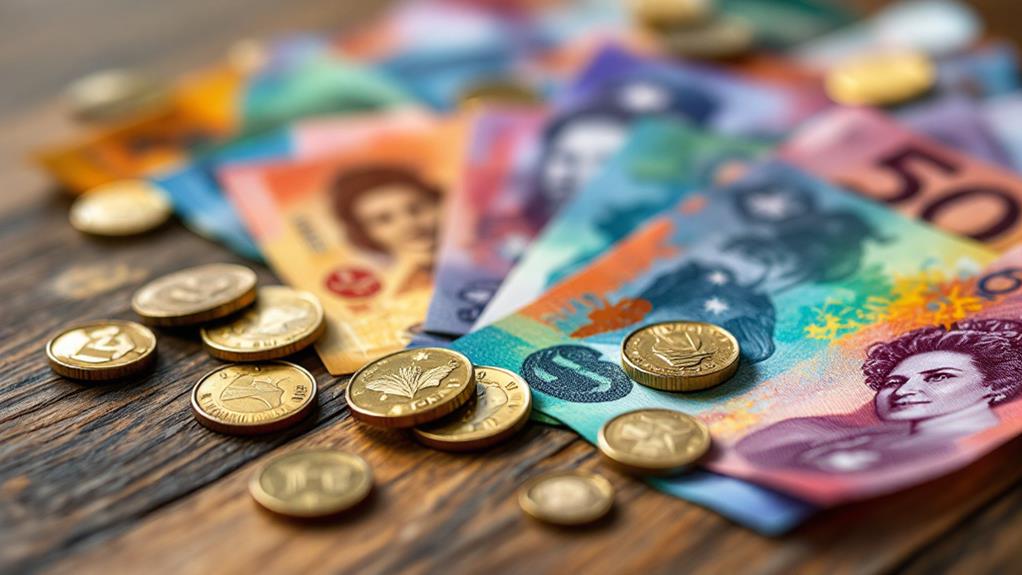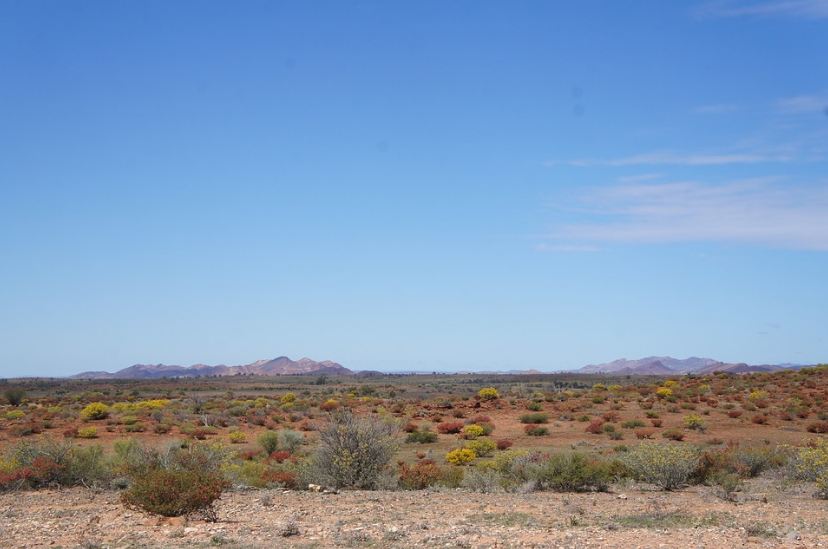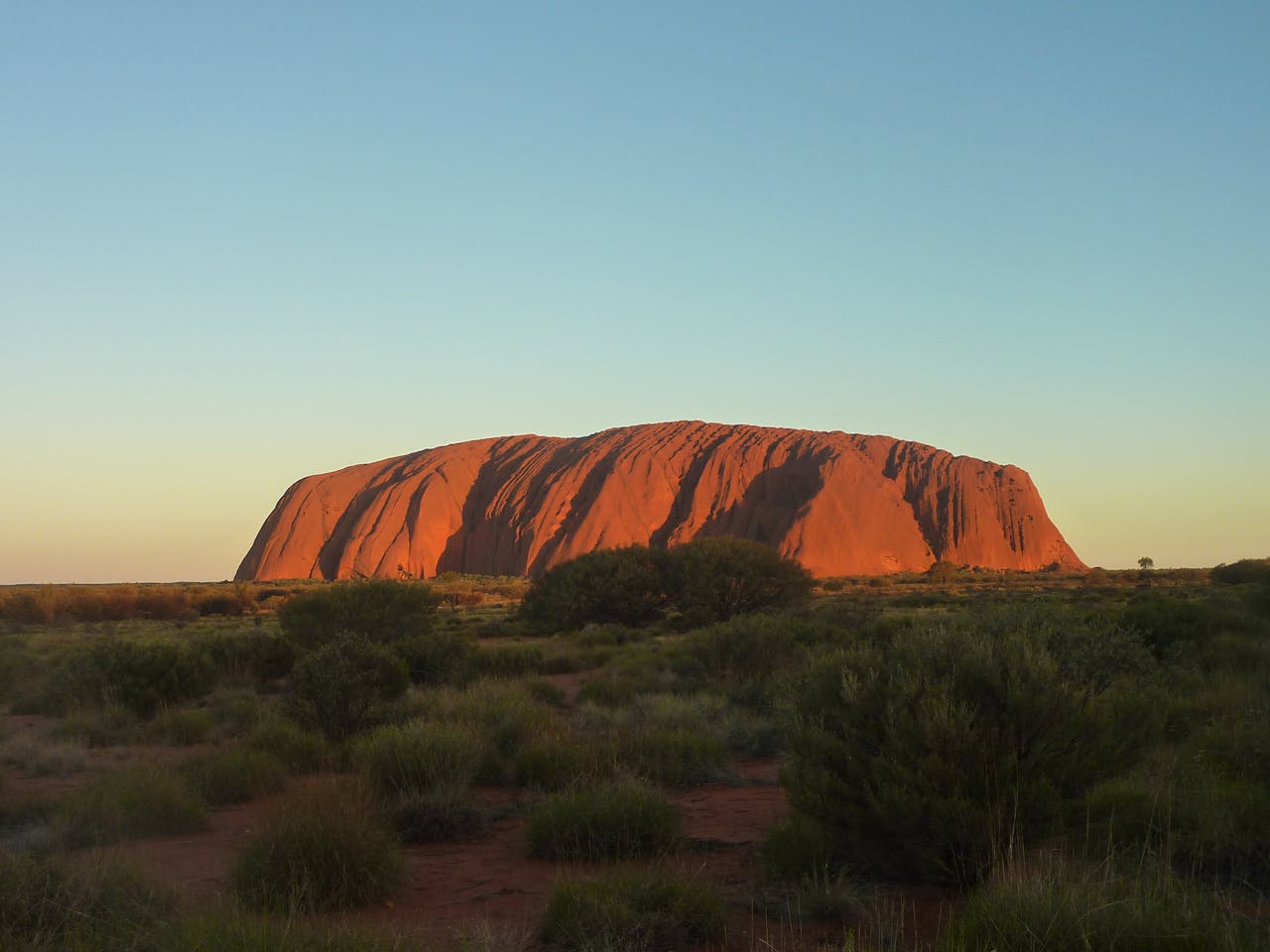What Currency Does Australia Use? A Guide to Australian Dollars

In Australia, you'll use the Australian Dollar (AUD) as the official currency. It's been around since 1966, when it replaced the Australian pound. Coins come in 5c, 10c, 20c, 50c, $1, and $2, while banknotes, made from sturdy polymer, include $5, $10, $20, $50, and $100. The AUD is globally significant, ranking as the seventh most-held reserve currency. If you're planning to exchange money or use credit cards, it's smart to know that rates and fees can vary widely. Want to navigate Australian currency like a pro? There's a lot more to uncover about its nuances and tips.
Australian Dollar Basics
When you think of Australia's lively economy, the Australian Dollar (AUD) takes center stage as its official currency. The AUD, represented by the familiar dollar sign ($), is more than just a symbol of trade; it's a key player in the global financial market. As the national currency, the Australian Dollar is the legal tender used for all transactions across the country. It was introduced on February 14, 1966, marking a significant shift from the Australian pound to the more streamlined decimal system.
Australian banknotes, crafted from durable polymer, come in denominations of $5, $10, $20, $50, and $100, making them both secure and long-lasting. Coins are available in 5, 10, 20, and 50 cents, along with $1 and $2 denominations. However, the 1c and 2c coins were discontinued in 1991, streamlining currency use.
The Australian Mint plays an essential role in producing this currency, ensuring its availability and authenticity. With the AUD being one of the most traded currencies globally, understanding its exchange rates is significant for anyone dealing in international markets. Its robust presence as the seventh most-held reserve currency underscores its global importance.
History of the AUD
The voyage of the Australian Dollar (AUD) began on February 14, 1966, marking a significant shift from the complex system of pounds, shillings, and pence to a more straightforward decimal currency. This change from the Australian pound to the AUD aimed to simplify monetary transactions and was inspired by similar alterations happening globally. Before the AUD's introduction, the old currency system often led to confusion in commerce due to its intricate calculations.
The conversion rate set at A$2 for every A£1 made the switch manageable and clear. With the launch of the AUD, the initial banknotes were issued in denominations of $1, $2, $10, and $20. These adjustments not only modernized Australia's currency but also streamlined everyday financial dealings.
Over time, the Australian dollar evolved further. In 1988, Australia introduced polymer notes, a groundbreaking step that improved the durability and security of the currency. These polymer banknotes were designed to combat counterfeiting and have since become a standard. The decision to decimalize and update the currency system with creative notes has made the AUD a reliable and efficient medium for monetary transactions in Australia.
Coins and Banknotes

Australia's currency system is as dynamic as its landscapes, featuring coins and banknotes that are both practical and visually appealing. The Australian dollar (AUD) is divided into 100 cents, and the coin denominations you'll come across include 5c, 10c, 20c, 50c, and the $1 and $2 coins. These coins boast unique designs, showcasing Australia's native wildlife and key national symbols, adding a touch of cultural heritage to everyday transactions.
Banknotes in Australia are a marvel of modern currency design. Introduced initially in 1988, the polymer banknotes were a groundbreaking innovation. They're issued in denominations of:
- $5 (blue): Embodying advanced security features.
- $10 (purple): Enhancing durability.
- $20 (red), $50 (yellow), $100 (green): Reducing production costs.
These polymer notes are not only colorful but also include advanced security features to thwart counterfeiting. The $1 and $2 banknotes were replaced by coins in the 1980s, ensuring the currency remains robust and efficient. Australia's move to polymer currency set a global precedent, making it the initial country to widely adopt this durable and secure material for its banknotes.
Exchange Rates Overview
Understanding the exchange rates is vital when dealing with the Australian dollar (AUD), especially given its dynamic nature in the global market. The AUD's value fluctuates, influenced by numerous factors including economic conditions and decisions made by the Reserve Bank of Australia. Currently, the exchange rate stands at approximately $1.57 AUD for every $1.00 USD, reflecting a stronger US dollar. This rate is essential for understanding the purchasing power of your travel money.
Before converting your foreign currencies, it's wise to check the latest rates through reliable platforms like XE Currency Converter. Doing so guarantees you get the most out of your currency exchange. Remember, currency exchange services at airports usually offer less favorable rates, so planning ahead can save you money.
The Australian dollar holds its ground as the seventh most-held reserve currency globally, underscoring its significance in international finance. For instance, $100 USD translates to about $151.17 AUD, illustrating the difference in purchasing power between these two currencies. By staying informed about exchange rates, you can make smarter decisions with your travel money and enhance your budget while exploring Australia.
Using Cards in Australia

When you're traveling through the lively streets of Sydney or exploring the Great Barrier Reef, using cards in Australia can be a convenient way to manage your finances. Credit cards, especially MasterCard and Visa, are widely accepted across the country, although American Express might not be available everywhere, and Discover cards usually aren't accepted. Before you swipe your credit card, consider the international transaction fees that range from 1% to 3%. Checking with your card issuer will help you avoid surprises.
Debit cards generally incur lower transaction fees, making them a cost-effective choice. They're great for accessing your funds without the hefty charges. Plus, ATMs are easy to find throughout Australia, allowing you to withdraw Australian dollars directly. Just make sure to inform your bank of your travel plans to prevent any card holds.
Here are a few tips for using cards in Australia:
- Consider travel debit cards: Options like those from Wise offer favorable exchange rates and lower fees.
- Use ATMs for cash: They're widely available and let you get Australian dollars directly.
- Check transaction fees: Be aware of potential costs when using credit or debit cards.
These strategies can help you manage your money wisely during your Australian adventure.
Currency Exchange Tips
While using cards can certainly streamline your financial transactions in Australia, knowing how to exchange currency effectively is just as essential. When planning your trip to Australia, keep these currency exchange tips in mind. Initially, avoid exchanging money at airports; they typically offer unfavorable rates. Instead, visit local banks or currency exchange services for better deals on the Australian dollar.
Using ATMs is another great strategy. They often provide competitive exchange rates compared to currency exchange booths. Just be certain your card is accepted and check for any withdrawal fees beforehand. Keeping an eye on market exchange rates through financial apps or websites also guarantees you're getting a fair deal.
Consider using a travel debit card like Wise. It allows for low-cost conversions and eliminates foreign transaction fees, making it a practical option in Australia. However, it's wise to carry a small amount of cash in AUD for minor purchases. Some places may not accept cards or might charge additional fees. By following these tips, you'll manage your money efficiently and make the most of your financial experience while exploring Australia.




